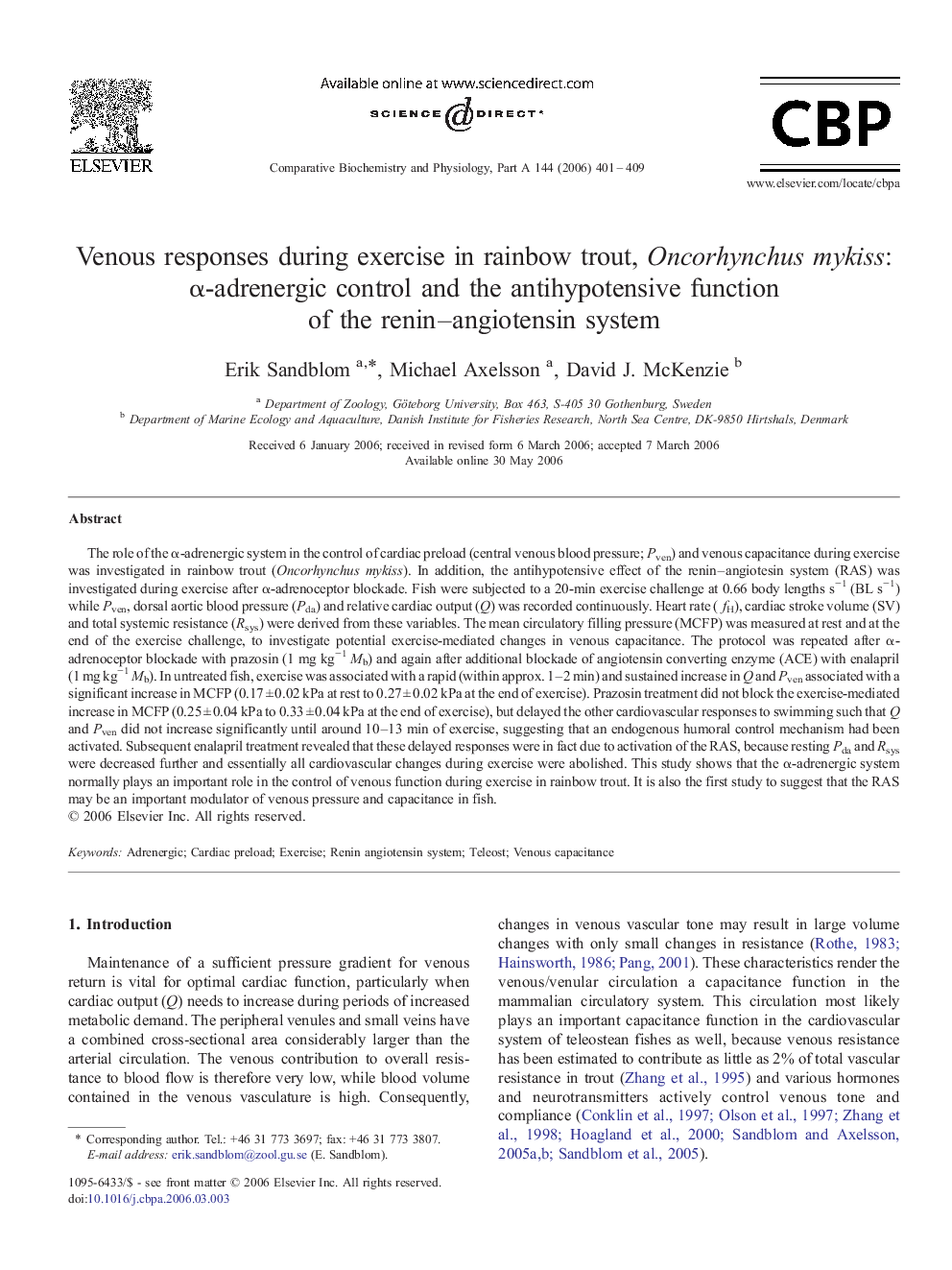| کد مقاله | کد نشریه | سال انتشار | مقاله انگلیسی | نسخه تمام متن |
|---|---|---|---|---|
| 1973612 | 1060321 | 2006 | 9 صفحه PDF | دانلود رایگان |

The role of the α-adrenergic system in the control of cardiac preload (central venous blood pressure; Pven) and venous capacitance during exercise was investigated in rainbow trout (Oncorhynchus mykiss). In addition, the antihypotensive effect of the renin–angiotesin system (RAS) was investigated during exercise after α-adrenoceptor blockade. Fish were subjected to a 20-min exercise challenge at 0.66 body lengths s−1 (BL s−1) while Pven, dorsal aortic blood pressure (Pda) and relative cardiac output (Q) was recorded continuously. Heart rate (fH), cardiac stroke volume (SV) and total systemic resistance (Rsys) were derived from these variables. The mean circulatory filling pressure (MCFP) was measured at rest and at the end of the exercise challenge, to investigate potential exercise-mediated changes in venous capacitance. The protocol was repeated after α-adrenoceptor blockade with prazosin (1 mg kg−1Mb) and again after additional blockade of angiotensin converting enzyme (ACE) with enalapril (1 mg kg−1Mb). In untreated fish, exercise was associated with a rapid (within approx. 1–2 min) and sustained increase in Q and Pven associated with a significant increase in MCFP (0.17 ± 0.02 kPa at rest to 0.27 ± 0.02 kPa at the end of exercise). Prazosin treatment did not block the exercise-mediated increase in MCFP (0.25 ± 0.04 kPa to 0.33 ± 0.04 kPa at the end of exercise), but delayed the other cardiovascular responses to swimming such that Q and Pven did not increase significantly until around 10–13 min of exercise, suggesting that an endogenous humoral control mechanism had been activated. Subsequent enalapril treatment revealed that these delayed responses were in fact due to activation of the RAS, because resting Pda and Rsys were decreased further and essentially all cardiovascular changes during exercise were abolished. This study shows that the α-adrenergic system normally plays an important role in the control of venous function during exercise in rainbow trout. It is also the first study to suggest that the RAS may be an important modulator of venous pressure and capacitance in fish.
Journal: Comparative Biochemistry and Physiology Part A: Molecular & Integrative Physiology - Volume 144, Issue 4, August 2006, Pages 401–409